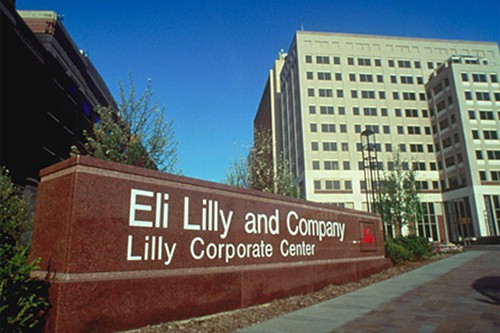
Eli Lilly now has approval for its new psoriasis treatment Taltz on both sides of the Atlantic after the European Commission granted marketing authorisation for the drug.
The interleukin-17 (IL-17) inhibitor – which was approved by the US FDA last month and is already on the market there – is indicated for the treatment of moderate-to-severe plaque psoriasis in adults who are candidates for systemic therapy.
Taltz (ixekizumab) is the second IL-17-targeting drug to reach the market after Novartis’ Cosentyx (secukinumab), which made $261m in 2015 and looks set to eclipse that after growing to $176m in the first quarter of this year. Interestingly, Cosentyx has seen buoyant take-up in Europe, particularly in Germany.
Lilly is expecting to start rolling out Taltz in EU countries from this summer and through to the end of 2018, taking into account the typical cycle times for reimbursement assessment.
The approved dosing regimen for Taltz is a 160mg subcutaneous injection, followed by an 80mg injection every two weeks for 12 weeks and then a maintenance dose of 80mg each month. In trials, around 90% of patients treated with Lilly’s drug had a 75% or more clearance in skin lesions after 12 weeks, with the majority (80%) showing clear or almost clear skin.
While second to market after Cosentyx, some clinicians say the phase III data for the two drugs suggest that Taltz may have some efficacy advantages over Novartis’ product – though no head-to-head comparison is available – and could allow it to mount a strong challenge.
“We’re focused on the really outstanding efficacy of Taltz,” commented David Ricks, president of Lilly’s biomedicines division, on the company’s first-quarter results call this week. “The drug works very fast [and] lasts a long time,” he added. “We think Taltz has best-in-class data.”
Taltz also requires fewer doses than Cosentyx, which requires weekly dosing in the first three months, while Novartis’ drug already has two additional indications in the bag (ankylosing spondylitis and psoriatic arthritis).
Overall, it is expected that the main battle for supremacy will come down to pricing, reimbursement/payer coverage and marketing. However, it should be pointed out that as biologic drugs have relatively low penetration in psoriasis compared to other diseases such as rheumatoid arthritis, rising treatment levels mean there could be plenty of room for both drugs.
A third anti-IL-17 candidate – Valeant’s brodalumab (just acquired from AstraZeneca) – could join the fray before the end of the year.
The EU approval for Taltz came on the eve of Lilly’s first-quarter results statement, which saw the company post a 5% revenue increase to $4.87bn although net profit fell 17% thanks to rising R&D costs, narrowly missing expectations.
Rising sales of new products such as diabetes treatments Trulicity (dulaglutide) and Basaglar (insulin glargine) and Cyramza (ramucirumab) for stomach cancer offset declines for some of Lilly’s older brands, notably Humalog (insulin lispro) which saw sales decline 11% to $606m in the quarter.




